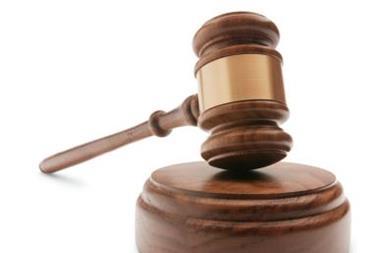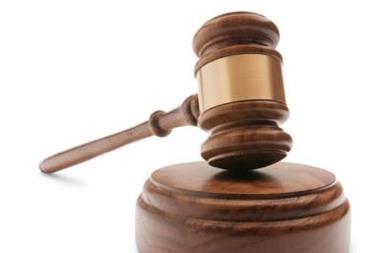Companies should look at the way that other businesses around the world operate to make sure that their legal team is being managed properly
The nature and global reach of modern business dictates that an in-house legal capability is appropriately risk managed – from its structure to the sourcing and provision of advice. Whether a business is looking to establish an in-house legal division or enhance the performance of its existing in-house team the importance of a robust risk strategy should not be underestimated. Accordingly, any business with a global footprint should look to all corners of the world when developing an in-house legal strategy.
Operational framework
The independence of both the internal legal team and its advice is paramount. The structural integrity of the in-house legal team is pivotal to this. The first step in any risk strategy looks at addressing the structure and use of the in-house legal function. Only when this has been achieved can other legal risk management strategies be properly developed and implemented as part of an organisation’s broader risk profile.
More than 10 years may have passed since the Enron debacle, yet it remains the ‘red flag’ barometer on what not to do with the in-house legal function. The fallout left various strategic legacies, including redirecting businesses to centralise in-house legal teams – a mindset that has been reinforced post-financial crisis.
Enron had a decentralised in-house legal model. Each division had its own internal and external legal counsel and a general counsel (GC) without proper overall authority. In so doing, the company had created roadblocks preventing a consistent, quality and ethical legal work product that was far from being accountable, independent, transparent or safe. Clouding the lines of authority and responsibility created a system counterintuitive to the way in which both in-house and external lawyers work.
With that in mind, understanding the centralised in-house legal structure and its associated benefits is key.
Multifaceted global businesses are complicated and an organisation’s particular nuances, and jurisdiction-specific and cultural issues, cannot be overlooked when structuring the in-house function. Yet it is important not to stray too far away from a structure where the GC directly reports to the chief executive and, as a minimum, has a functional working relationship with the board.
From there, all other in-house legal reporting lines should dovetail into and from the GC position within a central legal department so there is co-ordination and overseeing of work (see fig 1). From this point, all legal matters should then be directed via the in-house legal department, which can decide who should deal with them and/or whether external counsel is needed (see fig 2).
Significant legal and economic benefits flow from implementing such a framework and system of practice. For example, it provides quality control not only over the in-house legal team’s work product but also over externally sourced legal work. As well as quality control there are cost control measures regarding the external legal advice, a strengthening of the organisation’s purchasing power and loyalty from its external advisers to consider.
Within the business, greater certainty related to internal legal resourcing needs and improved professional development for junior and mid-level in-house lawyers are positive consequences of implementing a central in-house legal team. The checks and balances associated with a centralised model allow the ethical behaviour of internal and external lawyers to be thoroughly scrutinised. Equally, it is not a system that restricts innovative, commercially minded and solutions-based legal advice.
Experience suggests working within any other framework constrains an in-house lawyer to such an extent that it makes it difficult to feel that an optimal service is being provided to the business and/or that wider professional obligations expected of all lawyers are being fulfilled.
Risk managing: multiple hats
Many of today’s in-house lawyers, especially at senior level, also hold positions with non-legal responsibility. That can take any form, including company secretary, compliance and ethics offi cer, privacy officer, risk manager or senior executive member.
Best practice demands that, when an in-house lawyer undertakes non-legal responsibility, this is appropriately managed. Global case law and legislation show that a failure to manage the issue could expose an in-house lawyer personally as well as the business. Therefore, individuals and business alike need to be fully cognisant of the roles being played, especially if the lawyer holds a position beyond his/her traditional legal practice.
Additional duties may move an in-house lawyer into the territory of being a ‘director or officer’ of an organisation. As such, appropriate directors’ and officers’ insurance policies should reflect and cover such personnel and that may, in fact, include an organisation’s in-house lawyers. Beyond that, insurance policies bespoke to the in-house role are available and worth exploring.

Other strategies can be utilised when managing this issue: from maintaining separate and distinct email sign-offs and letterheads to the use of separate document management systems. These are all necessary components of sensible strategic management when in-house lawyers wear more than one hat.
Again, experience shows that playing multiple roles can place a heavy administrative burden on the in-house lawyer, but not doing so can leave the organisation with a flawed operational framework.
Other key strategies
Other issues associated with operating an in-house legal team also require proper risk management. Some are discussed below but only look at the broader considerations. Additional issues (see Top tips below) are equally important and require the development of appropriate strategies.
‘Client’: From the UK and Europe to US and Australasia, case law has helped steer business as to how this complex issue should be handled and, in so doing, defined global best practice.
The bottom line is an organisation cannot assume that all its employees will be legally viewed as the ‘client’ for the purposes of instructing its lawyers (internal or external) and receiving advice. Potentially, only particular individuals sufficiently close to the project will be viewed as representing the client.
The practical consequence is that organisations should be clear about documenting which individuals and stakeholders are responsible for dealing with internal or external lawyers. Should a need arise to go beyond the core group, this should be implemented and documented to explain the reasoning behind what is done.
Corporate groups: Corporate groups add another layer of complication as confusion can easily reign as to who an in-house lawyer may be acting for within the group. Again, courts worldwide have addressed the consequences of not handling matters correctly in such a setting.
It is vital to have an appropriate strategy in place to counter any potential adverse consequences. The reality is that the strategies that can be deployed are relatively straightforward yet effective. An in-house lawyer’s employment contract, for example, should specify for which entities he/she is employed to act. Similarly, prefixing the in-house lawyer’s title with ‘Group’ may be appropriate.
File and document management: Risk management strategies associated with fi le and document management are critical to any legal practice. An in-house legal practice is no different. To that end, a separate and centralised legal and document management system, restricting access to only the in-house lawyers and their support staff, should be established.
Final reflection
These issues only gloss the surface of the strategies required to guarantee the operational integrity and effectiveness of an organisation’s in-house legal function. An organisation’s failure to understand such pressure points potentially exposes it to negative legal and economic consequences. Conversely, if managed properly, it leads to more efficient and effective management of cross-border transactions, disputes and appropriate responses to regulatory investigations and/or enforcement.
By implementing global best practice, policies, procedures and structures, a business not only maximises the performance of its in-house legal capability but also insulates itself, as much as it is reasonably possible, against risk.
Lastly, but importantly, these strategies are not cost prohibitive and, in the long run, should provide cost benefits and a competitive advantage.
Sascha Hindmarch is of counsel in the London office of litigation boutique Hausfeld & Co
Top tip box
1 Centralise the in-house legal team. The GC reports to the chief executive/ board and in-house lawyer reporting lines fall from the GC. All legal matters, including those to be outsourced, are managed by the legal department.
2 Prior to instructing in-house and/or external lawyers, clearly identify those employees/stakeholders responsible for instructing and receiving legal advice – document appropriately.
3 Where in-house lawyers also perform non-legal functions, ensure an appropriate operational framework supports them.
4 Establish a legal file and document management system that restricts access to only the in-house legal team and support staff.
5 Implement further strategies around: in-house lawyer employment contracts; internal/external legal audits; communication practices; organisational systems; corporate policies and protocols specific to legal issues (for example, responding to a subpoena); physical location of the legal department; training; and education.




















No comments yet